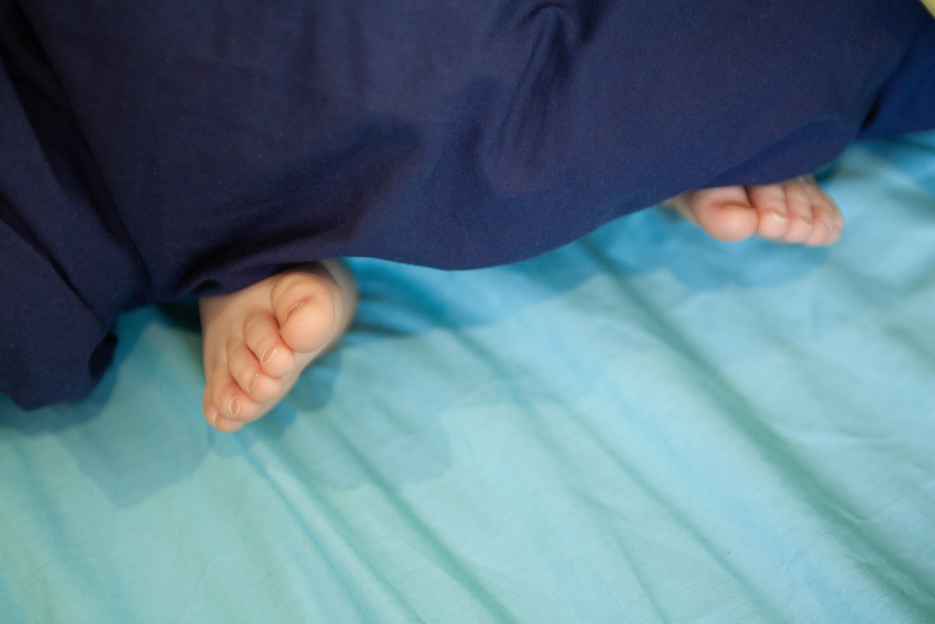
Weighted blankets and autism: what we know
by Mara Kenyon
Feb 1, 2024
NAPA occupational therapist, Mara Kenyon, weighs in on some of the theories and facts.
In the past few years, weighted blankets have transformed from a niche market to a genuine craze. The Gravity Blanket, a weighted blanket designed for adult use, raised over $4.7 million on Kickstarter in 2017, and that was just the beginning.
The weighted blanket has quickly cemented itself in the public consciousness as a tool to help stop endless nights spent tossing and turning. Additionally, weighted blankets have been suggested as a possible tool to help children with autism, in particular, improve their quality of sleep.
Do weighted blankets actually do anything, or is it all just a scam? And if they are effective, are they safe for children with autism to use?
Weighted blankets seem to be everywhere now, but just because something can be done, doesn’t mean it should. Let’s take a look at what weighted blankets claim to do, and how they can be used safely.
Benefits of a weighted blanket for a child with autism
Sensory integration theory posits that deep pressure input provides a calming effect to the nervous system. Deep pressure provides the body with a firm tactile input, which is organising and calming, versus a light touch, which is typically alerting and stimulating.
Think of the difference between a big, squeezy hug and someone tickling you with a feather.
Deep pressure input also activates the proprioceptive system, which is the sense responsible for body awareness. Following this theory, the increased proprioceptive input and deep pressure from a weighted blanket should produce a calming effect to help us drift off to dreamland.
But does it really help improve sleep?
The short answer: maybe. Few studies on the use of weighted blankets for autistic children have been completed, so it is hard to definitively say, “Yes, this works!”
A 2015 study on adults receiving inpatient mental health treatment revealed a 60% reduction in anxiety when using a 30-pound weighted blanket [1]. This study did not look at sleep or autism, but suggests that weighted blankets do produce a calming effect.
On the other hand, a 2014 randomised controlled trial on autistic children revealed that total sleep time did not change when using a weighted blanket. Despite this, the children in the study reported that they liked the blanket, and their parents tended to report that they seemed to sleep better [2].
Ultimately, more research is needed to support the effectiveness of weighted blankets. All that being said, nothing in the research indicates that weighted blankets for autism are harmful if used correctly. If your child likes it, use it!
How do I use a weighted blanket correctly?
The most important thing to consider with a weighted blanket is the child’s safety. A blanket that is too heavy for your child to remove may pose a suffocation risk. Make sure your child can easily remove the blanket independently.
Guidelines for weighted backpacks and weighted vests typically recommend they be no more than 10% of the child’s weight, but a higher blanket weight may be appropriate since the blanket is distributed across their entire body, not resting entirely on the shoulders.
A good initial guideline is 15-20% of body weight, always starting on the lower side and adjusting.
The other important thing is to listen to your child! We should never force adverse sensory experiences on our children, so if they say they don’t like it, maybe this may not be the tool for them.
Finally, using a weighted blanket on a child under two years old is not recommended.
This article was originally published by NAPA.
Mara has always known she wanted to work with children, and decided to become an OT when she saw how much it helped her younger brother who is autistic. She feels empowered that every day is a new opportunity to make a difference for her clients and their families. When not at NAPA, you’ll probably find Mara playing one of the board games in her giant collection (she owns more than 70) or marathoning Netflix shows.
Additional References:
1. Tina Champagne, Brian Mullen, Debra Dickson & Sundar Krishnamurty(2015) Evaluating the Safety and Effectiveness of the Weighted Blanket With Adults During an Inpatient Mental Health Hospitalization, Occupational Therapy in Mental Health, 31:3, 211-233, DOI: 10.1080/0164212X.2015.106622
2. Gee, B. M., Peterson, T. G., Buck, A., & Lloyd, K. (2016). Improving sleep quality using weighted blankets among young children with an autism spectrum disorder. International Journal of Therapy and Rehabilitation, 23(4), 173–181. doi: 10.12968/ijtr.2016.23.4.173
